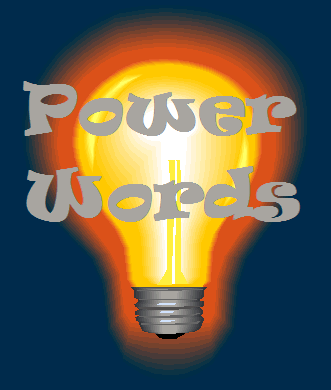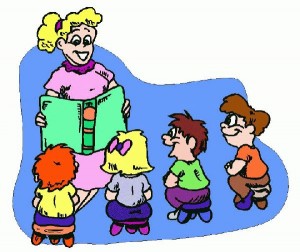Entries Tagged 'freelance copywriting' ↓
January 7th, 2009 — copywriting, copywriting tips, freelance copywriting, Suffolk copywriter, UK copywriter
Q: What is the one thing that freelance copywriters are always asked for?
A: Snappy copy.
Ask your client exactly what they mean by ‘snappy copy’ and the response is usually:
“Erm…you know…snappy…punchy…that sort of thing.”
Very insightful.
In order for a copywriter to create powerful copy, they need to utilise power words. These are very basic, simple words that don’t require defining or explaining. Your reader should be able to connect with them immediately.
You want to see some examples? OK. Power words are things such as:
- Love
- Hate
- Cash
- Care
- Best
- Crash
- Worst
- Win
- Lose
- Huge
- Risk
- Fizz
Once a copywriter has created a first draft, their next job is to read through the copy and clear out all the flabby worn-out words and replace them with something more powerful. Of course, the choice of words is going to depend on what you are writing and who you are writing for.
If you are still unsure of what I am getting at, I have listed below some worn-out words and given a powerful alternative.
Worn-out Powerful alternative
Cost-effective Cheap
Impact negatively Hurt
Optimal Best
Upgrade Boost
See how much ‘snappier’ the power words are? They will give you copy far more impact.
Sally Ormond
January 5th, 2009 — copywriting, copywriting tips, freelance copywriting, news, Uncategorized, website copywriting
Great Freelance Copywriting isn’t just about putting pen to paper or fingers to keyboard. It involves far more skill than that – in fact you could call it an art. There may not be any paint involved but words are intricately woven together into something powerful and compelling. There is no magic formula as it isn’t an exact science.
Before you can even start writing you have to have ideas. Whether you are writing a sales letter, brochure or webcopy, what you produce has to break through all the other sales messages out there, grab your reader’s attention and cling on to them until they have got out their credit card and bought your product.
It sounds so simple, but creativity can be elusive. Everyone has their own way of stimulating their creative flow and here are a few of mine:
- Walking the dog
- Going to the gym
- Read a book, magazine or newspaper
- Write down anything and everything that comes into your head
- Read some websites
- Imagine yourself as the buyer
- Work somewhere else other than your usual place
- Brainstorm keywords
What are your favourite ways of stimulating creativity? Do you use the same methods as me or do you have some far more interesting ways? Come on, don’t be shy share them with us.
Sally Ormond
January 2nd, 2009 — copywriting, copywriting tips, freelance copywriting
 If your copywriting is going to be successful you must make a connection with your reader. To do that you have to build rapport – create an emotional bond by tuning into their very thoughts and desires.
If your copywriting is going to be successful you must make a connection with your reader. To do that you have to build rapport – create an emotional bond by tuning into their very thoughts and desires.
Sound scary?
Just think about it for a second. You would have come across numerous sales people over the years. Of all the sales people you have bought from, where they caring, thoughtful, did they take an interest in you? Or were they stand-offish, self-centred and uncaring? I think I can guess what your answer is.
If you can show your reader that you understand their concerns and fears they are far more likely to buy from you.
But for this approach to work, you have to know what your reader is concerned about. For example, if you are selling toys or games you can tune into parental concerns.
A quick tip to build rapport immediately is to use three small but powerful words “As you know” when mentioning a fact about their job or interests such as:
‘Dear Mr James,
As you know it takes more than just a good grasp of English to become a great sales writer.’
Admittedly this method takes a bit of practice. To get a similar effect you can always adopt the easier option of flattering your reader. Let’s face it, everyone likes to be flattered and made to feel more important than they actually are. Show your reader how clever, important or beautiful they are and they’ll listen to you until the cows come home.
Sally Ormond
December 31st, 2008 — copywriting, copywriting tips, freelance copywriting
Why?
Any of you reading this with children would have experienced the perpetual ‘but why?’ phase that all children go through. It is a question everyone learns ask from a very early age. Sadly, although my children are rapidly heading towards their teenage years, it is a question that is still being asked with annoying regularity.
When you talk to someone directly it is easy to keep their interest as you can hold their attention with eye contact, your body language, the intonation of your voice and of course dialogue. When you are communicating via the written word you can’t use any of these techniques.
But all is not lost; there is a very simple technique you can use to stimulate a ‘conversation’ with your reader.
Ask Questions
If you are not used to writing in this style it can sound a bit obvious. But it does work. If you ask your reader a question, I can guarantee that they will think of an answer.
Why?
Because its human nature.
They can be:
- Closed questions – those that have a yes or no answer. These are great for closing a sale. They force someone to make a decision to buy.
- Limited questions – those which offer a choice from a set of answers (e.g. which do you prefer, white wine or rosé?) to engage people.
- Open questions – those which have no fixed answers. By using these you hand over conversational control to your reader. They can take their time considering their answer. People love this type of question.
Granted, it will take a bit of practice writing like this as it isn’t a style that comes naturally to many people. But stick with it, it will work.
Sally Ormond
This series of posts was inspired by the writing of Andy Maslen, copywriter (the link takes you to Andy’s Amazon page where you can find his range of excellent copywriting books) and his book ‘Write to Sell’ (Chapter 11).
December 29th, 2008 — copywriting, copywriting tips, freelance copywriting
 If you look back through the history books, you will see that the telling of stories has been a part of our culture for centuries. It was the way information was passed from person to person before the advent of today’s technology.
If you look back through the history books, you will see that the telling of stories has been a part of our culture for centuries. It was the way information was passed from person to person before the advent of today’s technology.
We have all grown up listening to stories – fiction as bedtime stories or fact from stories told to us about the ‘olden days’ by our Grandparents. The human race is preconditioned to listen to stories, which is why freelance copywriters exploit this fact in their sales writing?
I don’t mean ‘Once upon a time…’ stories – you wouldn’t be much of a copywriter if that was how you began every sales message (although I dare say there may be occasions when that could be very effective). But if you can incorporate a story within your copy, it will strike a chord with your reader who then will be unable to resist reading it.
How to incorporate a story
For a sales letter, you can easily don your storyteller’s hat in this way:
Dear Mrs Gregory,
Like you, Dorothy Jones found she was having difficulty in coming up with original material for her sales literature. She spent hours of her time trying to create something fresh and interesting. Then she came across Briar Copywriting. They were fantastic and, from her brief, produced a new and compelling brochure. Sales and enquiries have now increased…
If you are writing webcopy you can use a similar technique but your story would be in the form of a case study. By its very nature, it is already a story.
No matter what type of writing you are incorporating your story into, you must keep its content and subject matter relevant.
Sally Ormond
This series of posts was inspired by the writing of Andy Maslen, copywriter (the link takes you to Andy’s Amazon page where you can find his range of excellent copywriting books) and his book ‘Write to Sell’ (Chapter 11).









